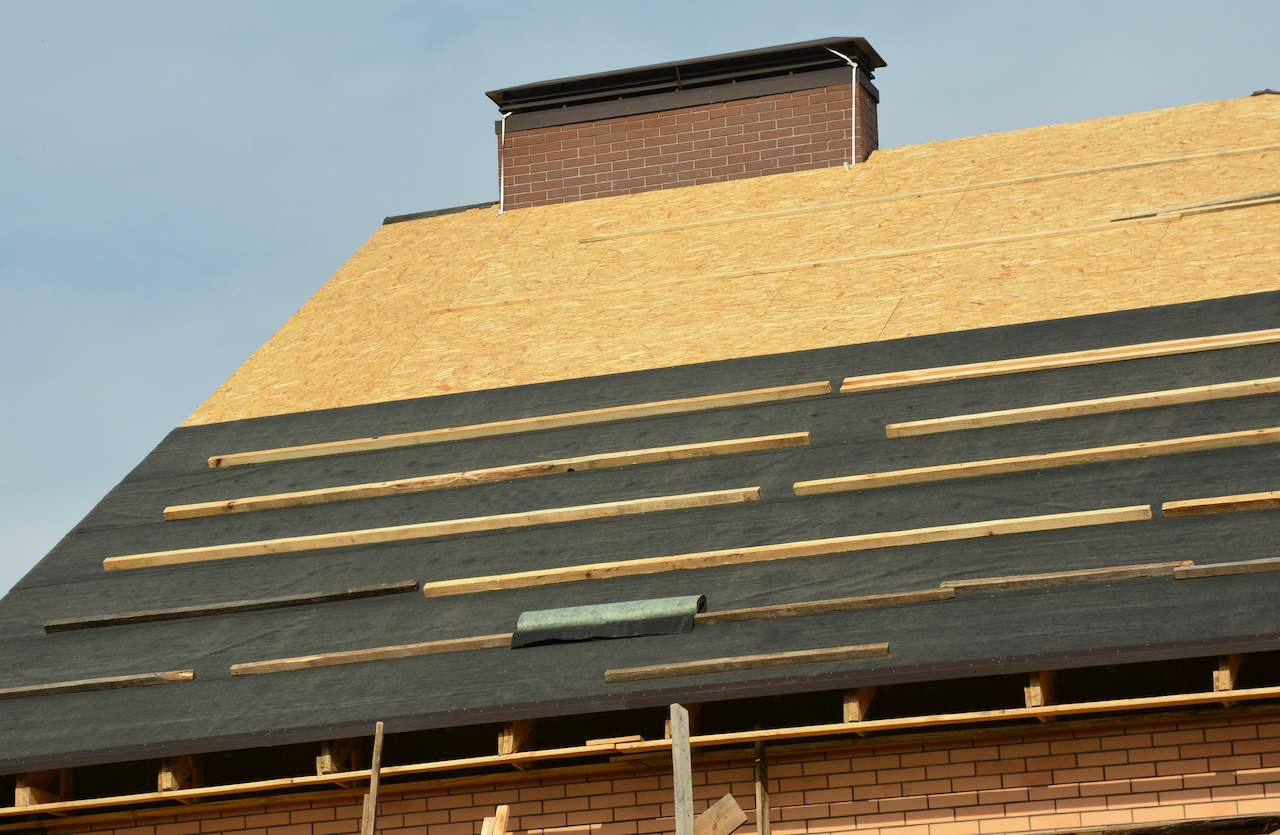
What’s actually keeping water out of your attic when it pours? It’s not just those shingles. Underneath them lies roofing underlayment – a critical layer that really does the heavy lifting in protecting your home. When you’re getting a new roof, professional roofers know this hidden layer matters just as much as the shingles everyone sees.
While it works silently beneath the surface, this barrier stands between your family and potential water damage, mold growth, and structural problems. Let’s break down why this overlooked component deserves your attention when you’re thinking about roof work.
Your roof takes a beating from sun, rain, snow and wind day after day. The underlayment is your home’s backup plan when those elements start wearing down your shingles. This protective layer sits right on your roof deck, catching water that might sneak past damaged or aging shingles. Without good underlayment, even minor roof damage can lead to significant headaches – think water spots on your ceiling, rotting wood, and even mold inside your walls. Think of underlayment as cheap insurance.
The upfront cost is nothing compared to fixing water damage throughout your home. Good underlayment buys you time when shingles get damaged, giving you a chance to address issues before water ruins your day (and your wallet).
Your roof’s underlayment isn’t just there for show – it’s working hard in several ways you might not realize. First, it acts like your home’s raincoat, providing a second line of defense when water gets past your shingles. It also helps your home breathe properly, letting moisture escape from your attic while keeping rain out. During hot summers, good underlayment reflects heat away from your attic, potentially saving you money on cooling costs.
And when contractors need to walk on your roof for maintenance, that underlayment cushions impacts that might otherwise damage your roof deck. In winter, it helps prevent ice dams from forcing water back under your shingles. It’s handling problems you don’t even know you have.
You’ve got options when it comes to underlayment, and the choice matters more than you might think. Old-school felt paper (what your dad might call tar paper) has protected homes for decades and won’t break the bank. It’s still solid for essential protection, especially in moderate climates. Rubberized asphalt costs more but sticks to your roof deck like glue – great if you live somewhere with wild weather swings or heavy storms.
The newest players are synthetic underlayments, which won’t tear easily during installation and resist water better than traditional materials. They cost more upfront but might save you money long-term by lasting longer and protecting better. Your climate, budget, and how long you plan to stay in your home should guide your choice.
Getting underlayment right isn’t something to cut corners on. The job starts with cleaning your roof deck thoroughly – even small debris can puncture underlayment over time. Installation should always begin at your roof’s lowest edge, working upward with each new row overlapping the previous one. The fasteners matter too – using too few means your underlayment might blow off in strong winds, while using too many creates unnecessary holes.
Most roof leaks start around chimneys, vents, and valleys, so extra care with proper flashing and sealing in these spots pays off tremendously. Before finishing, competent contractors always inspect the entire surface for wrinkles, tears or gaps that could cause problems later. This attention to detail separates quick fixes from lasting protection.
Good underlayment pays for itself many times over. Beyond just stopping leaks, it adds years to your roof’s life by reducing daily wear and tear on your shingles. When summer heatwaves hit, quality underlayment helps keep that hot air from baking your attic and forcing your AC to work overtime. During roof replacement, it shields your home if unexpected rain shows up mid-project.
You’ll also notice the difference during heavy downpours – houses with proper underlayment stay quieter because it absorbs some of that drumming sound of rain hitting your roof. Peace of mind might be the most significant benefit – knowing that even if a few shingles blow off in a storm, you still have solid protection until repairs happen.
Don’t wait for water stains on your ceiling to consider what’s under your shingles. Next time you talk to a roofer, ask about underlayment options for your home. A quality installation now means fewer emergency calls and repairs later – and that’s protection worth investing in.
Share :
Jacksonville
4600 Touchton Rd Building 100, Suite 150, Jacksonville, FL 32246, United States
Orlando
37 N Orange Ave #500, Orlando, FL 32801, United States
Tampa
5401 W Kennedy Blvd., Ste 100, Tampa, FL 33609
Venice
1101 Tamiami Trail S, Ste 100T, Venice, FL 34285
Monday – Friday: 9:00 AM – 5:00 PM
Saturday – Sunday: Closed
Subscribe to our newsletter for the latest updates and offers.